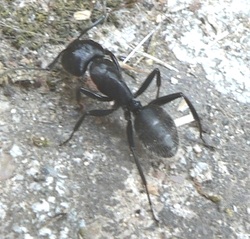From the mid 1850’s until the 1940’s, uranium glass was manufactured and sold as both decorative and food glassware. The source of the uranium, mostly in the form of oxides, became unavailable as the US entered into the cold war when making bombs was more of a priority than making dishes. Uranium glass can be anywhere between a light yellow to green, depending on the oxidation state of the metal ions. The tube in the photos is one that I have and is about three inches long and is a standard color of uranium glass. Some glass may also have other colorants. The most typical color is that of the tube in the above left photo and is almost the color of Vaseline, which is one of the names applied to this fascinating glass. But, the most significant feature of uranium glass is that it fluoresces under the influence of ultraviolet (black light) as in photo on the right.
There is a great site with some nice examples of uranium glass. You can see them on the WebEcoist site here.


 RSS Feed
RSS Feed
